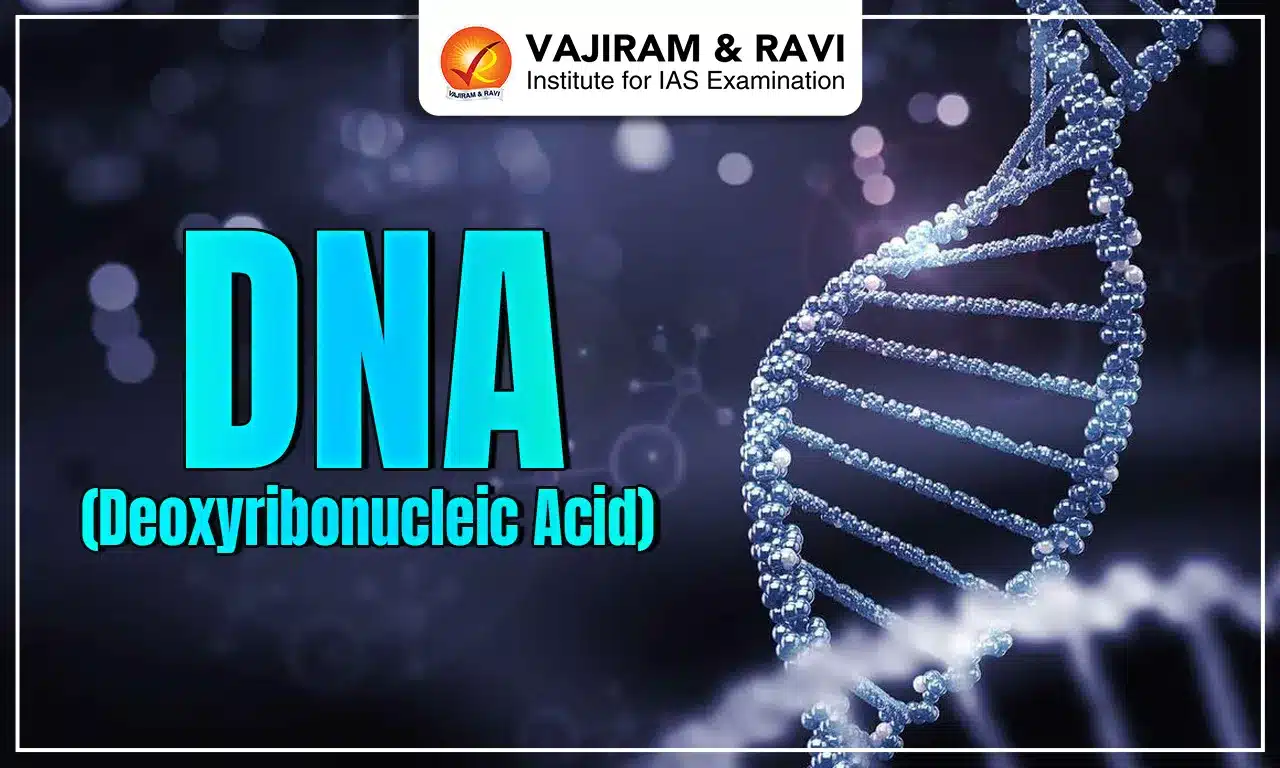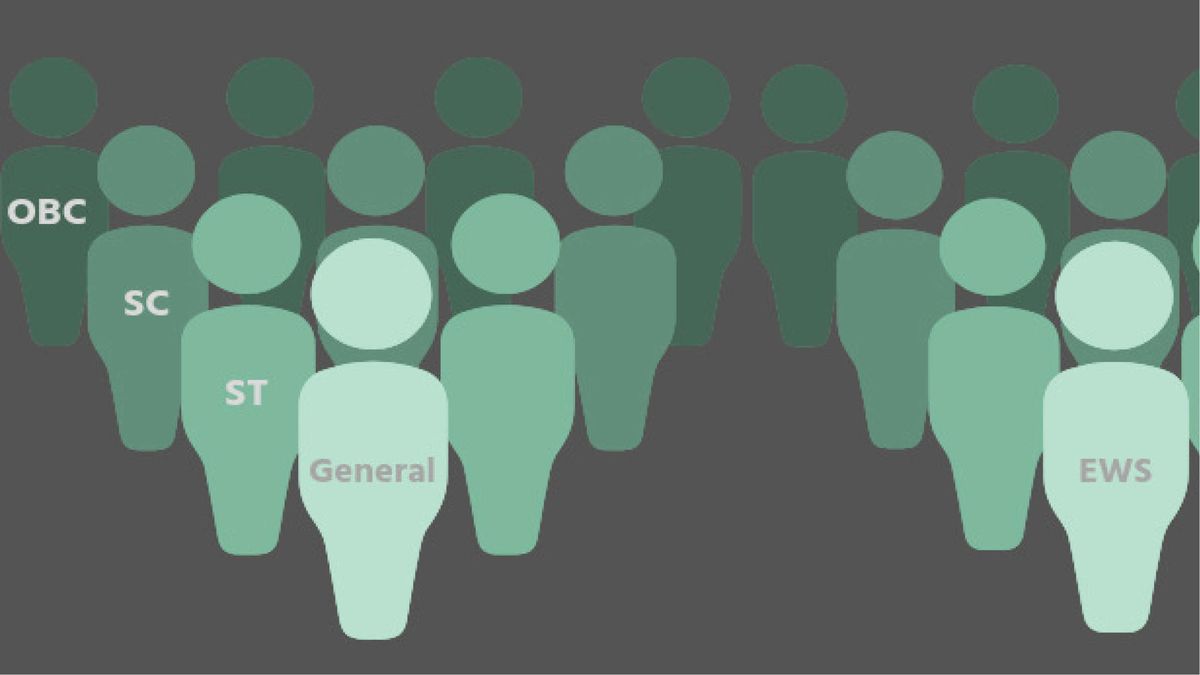Deoxyribonucleic Acid (DNA) is the molecule that carries the genetic information for an organism's development and function. DNA is made up of two linked strands that wind around each other to form a twisted ladder shape known as a double helix. The majority of DNA is found in the cell nucleus (referred to as nuclear DNA), but a small amount can also be found in the mitochondria. DNA is essential in all living things for inheritance, protein-coding, and providing instructions for life and its processes.
About DNA
In the late 1800s, Swiss biochemist Frederich Miescher discovered DNA. However, it took nearly a century for scientists to figure out the structure of the DNA molecule and realize its significance in biology.
- James Watson, Francis Crick, Maurice Wilkins, and Rosalind Franklin demonstrated the significance of DNA in 1953. These scientists discovered the double helix structure of DNA by studying X-ray diffraction patterns and building models.
- This structure allows DNA to carry biological information from generation to generation.
Structure of DNA


DNA is a two-stranded molecule that looks twisted, giving it the distinctive shape of a double helix. Each strand has an alternating backbone of sugar (deoxyribose) and phosphate groups.
- Each sugar has one of four bases attached to it: adenine (A), cytosine (C), guanine (G), or thymine (T).
- Chemical bonds between the bases connect the two strands: A=T and C=G.
- Human DNA consists of about 3 billion bases, and more than 99 per cent of those bases are the same in all people.
- The sequence of the bases along DNA’s backbone encodes biological information, such as the instructions for making a protein or RNA molecule.
- Each strand is a long sequence of nucleotides. These are the individual DNA units, and they are composed of:
- A phosphate molecule
- A sugar molecule called deoxyribose, containing five carbons
- A nitrogen-containing region
Location of DNA

Most DNA is located in the cell nucleus. The nucleus is often referred to as the "control centre of a cell" because it regulates functions such as metabolism, growth, and reproduction. The genome refers to an organism's entire DNA.
- DNA is packed into chromosomes, which form genetic information to create genes.
- Chromosomes are threadlike structures composed of protein and a single molecule of DNA that transport genomic information from cell to cell.
- Humans have 23 pairs of chromosomes, for a total of 46 chromosomes.

- Apart from the nucleus, the mitochondria contain a small amount of DNA known as mtDNA. The mitochondria are often referred to as the "powerhouse of the cell" because they are responsible for releasing energy from food.
Types of DNA
Three major forms of DNA are double-stranded and connected by interactions between complementary base pairs. These are A-DNA, B-DNA, and Z-DNA.

- A-DNA is a right-handed double helix composed of deoxyribonucleotides. The two strands of A-DNA are anti-parallel and not symmetrical.
- The backbone of A-DNA is made up of sugar phosphates that are linked together indefinitely by phosphodiester bonds.
- B-DNA has a right-handed double helix structure and is the most common type of DNA.
- B-DNA has two strands that run in opposite directions. The structure is asymmetric, with major and minor grooves alternately present.
- Sugar phosphates serve as the backbone of B-DNA.
- B-DNA is narrower than A-DNA.
- Z-DNA has a left-handed double helix structure.
- The backbone's zigzag appearance distinguishes it from other forms of DNA.
- It can be observed in bacteria, eukaryotes, and viruses.
Functions of DNA
DNA contains the instructions required for an organism to develop, survive, and reproduce. To perform these functions, DNA sequences must be converted into messages that can be used to make proteins, which are the complex molecules that do the majority of the work in our bodies.
Protein Synthesis
Protein synthesis is the process by which cells make proteins. DNA carries the codes for proteins. However, the actual protein differs significantly from the DNA codes. The basic steps are as follows:
| Steps of Protein Formation | |
| Transcription |
- The process of copying genetic information from one strand of the DNA into RNA is termed as transcription. - This molecule serves as a messenger, carrying information to other parts of the cell. |
| Translation |
- In this step, the cell organelles called ribosomes act as translators by translating the messenger's code into the proper protein format or a chain of amino acids that form the building blocks of the protein. - Each amino acid is created by combining three bases on the RNA. |
| Modification and Folding | The third step is to modify, fold, and structure the final protein before delivering it to the required parts of the body. |
| Coding for Proteins |
- Messengers read DNA and break it open into single-stranded polynucleotide chains, which are then copied into RNA. - RNA forms opposite bases from those found in DNA. For example, G on the DNA forms C on the RNA strand. - The bases combine in groups of three to form specific amino acids. There are a total of 20 such amino acids. These are also known as protein building blocks. |
DNA Replication

The biological process of producing two identical replicas of DNA from a single original DNA molecule is known as DNA replication. DNA replication aids in a variety of functions, from reproduction to cell, tissue, and body system maintenance and growth.
- In this process, the tightly wound DNA strands unwind and literally unzip, leaving several bases without their partners on the other strand and remaining along the backbone of the molecule.
- The bases are very particular about which base they will attach to, with adenine only pairing with thymine and guanine only pairing with cytosine.
- Unpaired bases attach to these free bases, forming a new strand that is complementary to the original sequence.
- The end result is a strand that is an exact match to the original before being unzipped. As a result, two new pairs of strands and two coiled DNA are formed.
- Each new DNA contains one strand from the mother pair and one from the new one. The cell cycle would stop and cells would die if DNA was not replicated.
- DNA replication can also be done in vitro (artificially, outside of a cell).
Stores Genetic Information
DNA is the chemical basis of heredity and can be considered a repository of genetic information. Over millions of years, DNA has been solely responsible for maintaining the identity of various species of organisms.
- DNA carries the genetic information that determines our traits, such as eye colour, hair type, and susceptibility to certain diseases, in humans.
Last updated on January, 2026
→ Check out the latest UPSC Syllabus 2026 here.
→ Join Vajiram & Ravi’s Interview Guidance Programme for expert help to crack your final UPSC stage.
→ UPSC Mains Result 2025 is now out.
→ UPSC Notification 2026 is scheduled to be released on January 14, 2026.
→ UPSC Calendar 2026 has been released.
→ UPSC Prelims 2026 will be conducted on 24th May, 2026 & UPSC Mains 2026 will be conducted on 21st August 2026.
→ The UPSC Selection Process is of 3 stages-Prelims, Mains and Interview.
→ Prepare effectively with Vajiram & Ravi’s UPSC Prelims Test Series 2026 featuring full-length mock tests, detailed solutions, and performance analysis.
→ Enroll in Vajiram & Ravi’s UPSC Mains Test Series 2026 for structured answer writing practice, expert evaluation, and exam-oriented feedback.
→ Join Vajiram & Ravi’s Best UPSC Mentorship Program for personalized guidance, strategy planning, and one-to-one support from experienced mentors.
→ UPSC Result 2024 is released with latest UPSC Marksheet 2024. Check Now!
→ UPSC Toppers List 2024 is released now. Shakti Dubey is UPSC AIR 1 2024 Topper.
→ Also check Best UPSC Coaching in India
DNA FAQs
Q1. Who discovered the DNA?+
Q2. What are the different types of DNA?+
Q3. What is DNA replication?+
Q4. What are the main functions of DNA?+
Q5. What is the structure of DNA?+

















